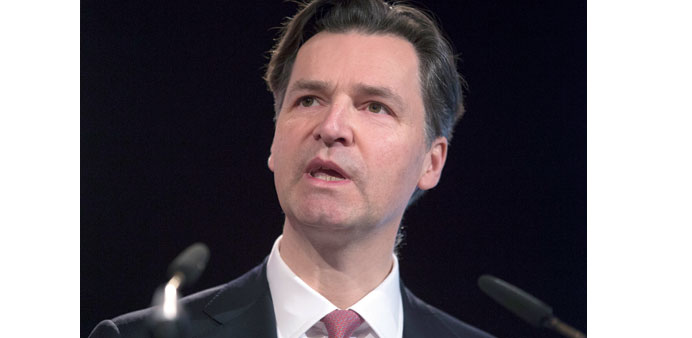Bloomberg
London
Heathrow Airport may benefit from the scandal at Volkswagen because it will prod the UK to clamp down on diesel pollution, helping bring London’s busiest hub into compliance with European Union rules.
That’s the view of Heathrow chief executive officer John Holland-Kaye, who is seeking permission to build a third runway even though emissions near the airport have exceeded EU limits ever year since they were brought into force in 2010. Environmental campaigners say expanding the hub will worsen air quality by bringing in more cars.
“It’s shocking what Volkswagen has done,” Holland-Kaye said in a phone interview. “It’s an extraordinary breach of trust. What it will do is to drive people on further to move more quickly to alternatives such as electric and hydrogen powered vehicles. We’ll see that accelerating over the next 10 years as a result of this Volkswagen scandal.”
Poor air quality near the airport is one of the negatives hanging over Heathrow as it seeks to persuade Prime Minister David Cameron to build a third runway. With monitoring sites close to the hub exceeding EU limits on nitrogen dioxide, a pollutant that has been blamed for thousands of deaths in London, the government, local authorities and Heathrow are under pressure to show how they can meet the standards.
The airport is expanding rail links and electrifying its own vehicles in an effort to reduce air pollution in and around Heathrow. It’s also encouraging airlines to switch off one or more engines while taxiing and providing planes with electricity and conditioned air so that they can switch off on-board generators.
“With the things that we are doing those points will be within EU limits by 2020,” Holland-Kaye said on Wednesday. “Without expansion we’ll be within the EU limits, and with expansion we’ll be within the EU limits.”
Holland-Kaye sees a second unlikely source of help in his effort to improve air quality: the UK Supreme Court, which in April ordered the government to prepare a plan this year to satisfy the EU pollution mandates.
“In the same way, the Supreme Court ruling is a good thing for us,” the CEO said. “We need to work with the Mayor of London, with local councils, with bus companies, with the government to change the way which we manage vehicles and use vehicles in these heavily built-up areas. The Supreme Court ruling will help with that.”
The hub still has a way to go. The Airports Commission warned in July that without new measures to curb nitrogen-dioxide emissions, Heathrow’s growth would raise pollution levels in the surrounding area. In a “pessimistic” scenario, nearby roads would become the most polluted in the capital within 15 years, it said.
While most air quality monitoring stations in the immediate vicinity of the airport already comply with the nitrogen dioxide regulations, one facility next to the M4 motorway about a mile away has exceeded the EU’s 40-microgram annual average limit every year since it entered into force in 2010, according to King’s College London data. Last year, the average was 58 micrograms, the highest since at least 2000. Heathrow estimates airport-related traffic accounts for about 16% of emissions at the site, giving the hub a small role to play in bringing the level down.
“Over the last 30 years, we’ve seen no increase of cars on the road as a result of growth of passenger traffic at Heathrow because of changes we’ve made,” Holland-Kaye said. Those measures include car-sharing programs and increased rail connections. “There’s a whole series of measures we are taking that will mean we will have no more cars on the road, even with expansion.”

Kaye: For going green.


